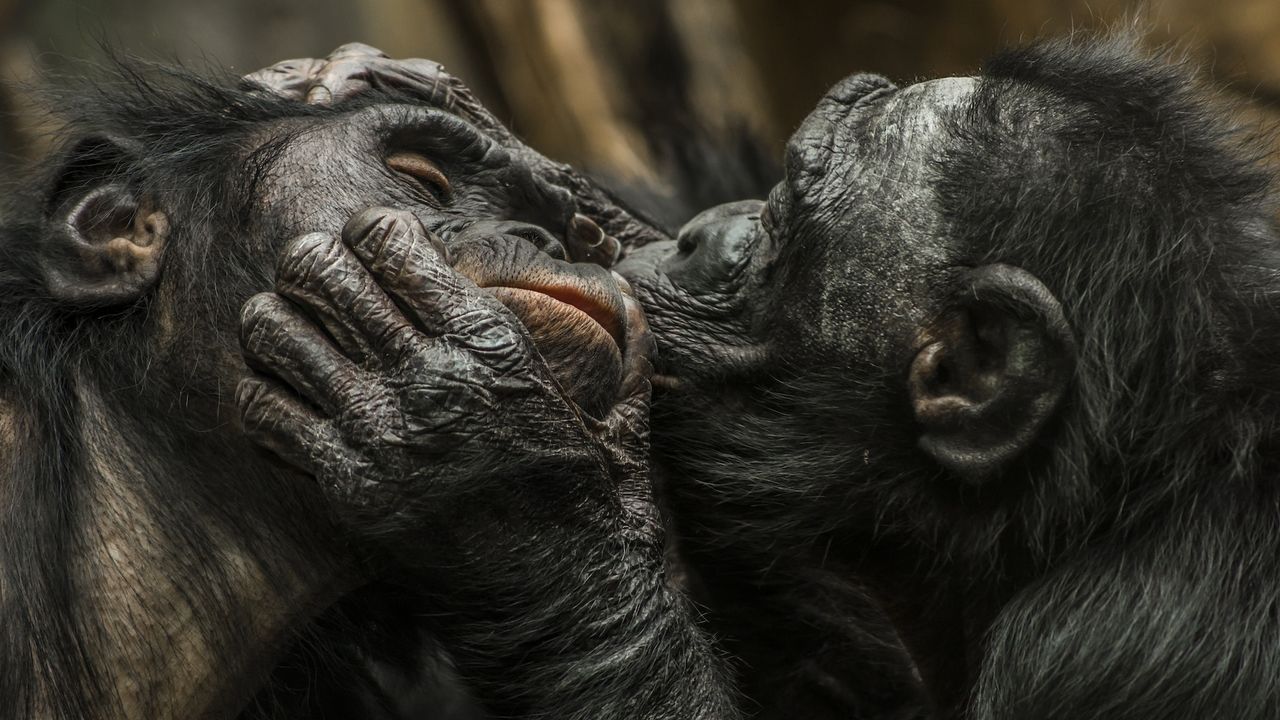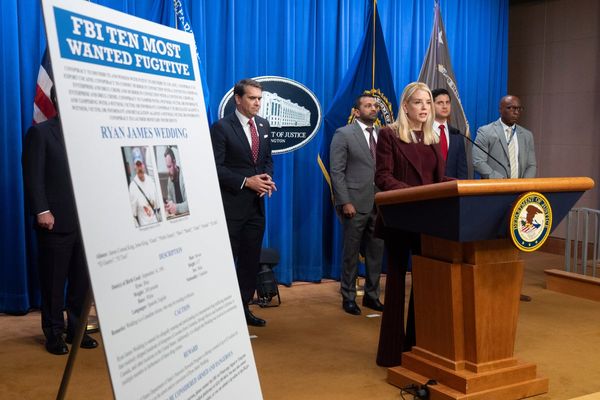
The act of kissing may have started long before modern humans existed, a new modeling study suggests.
Kissing stretches back roughly 21 million years, to the shared ancestor of humans and other large apes, according to the study, published Wednesday (Nov. 19) in the journal Evolution and Human Behavior. Meanwhile, Homo sapiens likely emerged around 300,000 years ago.
The researchers also concluded that kissing most likely occurred in Neanderthals, the closest extinct relatives of modern humans, and that Neanderthals and modern humans may have kissed each other.
"This is the first time anyone has taken a broad evolutionary lens to examine kissing," study lead author Matilda Brindle, an evolutionary biologist at the University of Oxford, said in a statement. "Our findings add to a growing body of work highlighting the remarkable diversity of sexual behaviours exhibited by our primate cousins."
Model kissing
Before dating the world's oldest kisses, an international team of researchers defined what it means to kiss. This was important, because other mouth-to-mouth actions in nature look similar to kissing. For example, mother orangutans and chimpanzees transfer chewed food to their infants mouth to mouth, and fish engage in "kiss fighting" to assert dominance or compete for territory. Ultimately, the researchers defined kissing as "non-aggressive, mouth-to-mouth contact that did not involve food transfer," they wrote in the statement.
Based on this definition, various modern-day primates — including bonobos, gorillas, chimpanzees, orangutans, macaques and baboons — have been observed kissing.
The researchers then used a statistical method called Bayesian modeling to reconstruct the evolutionary history of kissing. They treated kissing as a biological trait and tested many possible ways this behavior could have evolved to see how likely it was that different ancestors also kissed. They ran the model 10 million times to make sure the results were strong and reliable.
They concluded that kissing evolved once in the common ancestor of large apes (Hominidae) sometime between about 21.5 million and 16.9 million years ago.
However, kissing was absent in ancestral Macacina and Papionina (groups that include macaques and baboons), suggesting that kissing evolved separately in the modern-day species belonging to these groups. The team determined this by extrapolating back in time from the behavior of modern-day species to that of their common ancestors.
Although more evidence is needed, the researchers said kissing might have evolved from the practice of pre-chewing and transferring food from a mother to an infant. This practical food-sharing behavior may have been repurposed into what we now recognize as kissing.
How this fits in with earlier kissing research
The finding that Neanderthals kissed not only each other but also modern humans isn't exactly news to anthropologists.
"I am not sure that the current study adds anything substantially new to our knowledge of this behavior in Neandertals," April Nowell, a Paleolithic archaeologist and professor of anthropology at the University of Victoria in British Columbia who was not involved with the study, told Live Science in an email.
But the new study does align with previous findings. Nowell noted that "intriguing evidence" came in 2017, when a different research group compared microbes preserved in the dental plaque of a Neanderthal who lived 48,000 years ago with those found in modern human mouths. The team concluded that Neanderthals and H. sapiens may have kissed each other, although the microbial overlap could also reflect shared food or water, said Nowell, who was not a part of that study.
Additionally, we already know that H. sapiens and Neanderthals mated during a roughly 7,000-year-long pulse, so it's possible that some kissing occurred when that happened assuming that some ancient mating behaviors were similar to those of today.
That said, it's unclear how widespread kissing was among our human relatives. Because kissing isn't a universal behavior among modern humans — only about half of cultures engage in it — Nowell said the same variability may have existed in the past. If Neanderthals kissed, she said, "then it might have been a behavior that some Neandertal communities engaged in while others did not."
Scientists still aren't sure why kissing persists across so many species, especially given the potential downsides, such as the spread of disease. One idea is that kissing helps individuals boost reproductive success. For example, kissing a potential partner may help people gauge a mate's quality through subtle chemical cues which can offer clues about a person's overall health, genetic compatibility, immune system, and the makeup of their oral microbiome, the researchers wrote in the new study. Researchers have also proposed that kissing strengthens social bonds and may even benefit immunity by allowing the exchange of microbes.







